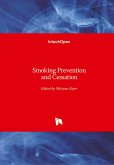The tobacco epidemic is one of the biggest public health threats the world has ever faced, killing more than 8 million people a year around the world. India is the second largest consumer of tobacco. Tobacco is also the leading cause of non-communicable diseases (NCDs); mortality due to NCDs accounts for about 63%, and 80% of the deaths due to NCDs occur in low and middle-income countries (LMICs) and 50% of these deaths occur in the active age group of 30 to 69 years.Mentioning economic and social costs, are least considered among the stakeholders. Moreover, cigarettes and beedis are available in wide varieties and forms giving an option to choose the cheapest for the unaffordable class. Expenses incurred in tobacco use substitute for the basic needs of food and education. Treatment of tobacco-related diseases is high due to increased out-of-pocket expenditure and exacerbating poverty.So, it has become very essential for the integration of tobacco cessation programs with health and development programs which can be very helpful in overcoming the barriers to tobacco control and decreasing the tobacco-associated burden.
Hinweis: Dieser Artikel kann nur an eine deutsche Lieferadresse ausgeliefert werden.
Hinweis: Dieser Artikel kann nur an eine deutsche Lieferadresse ausgeliefert werden.








